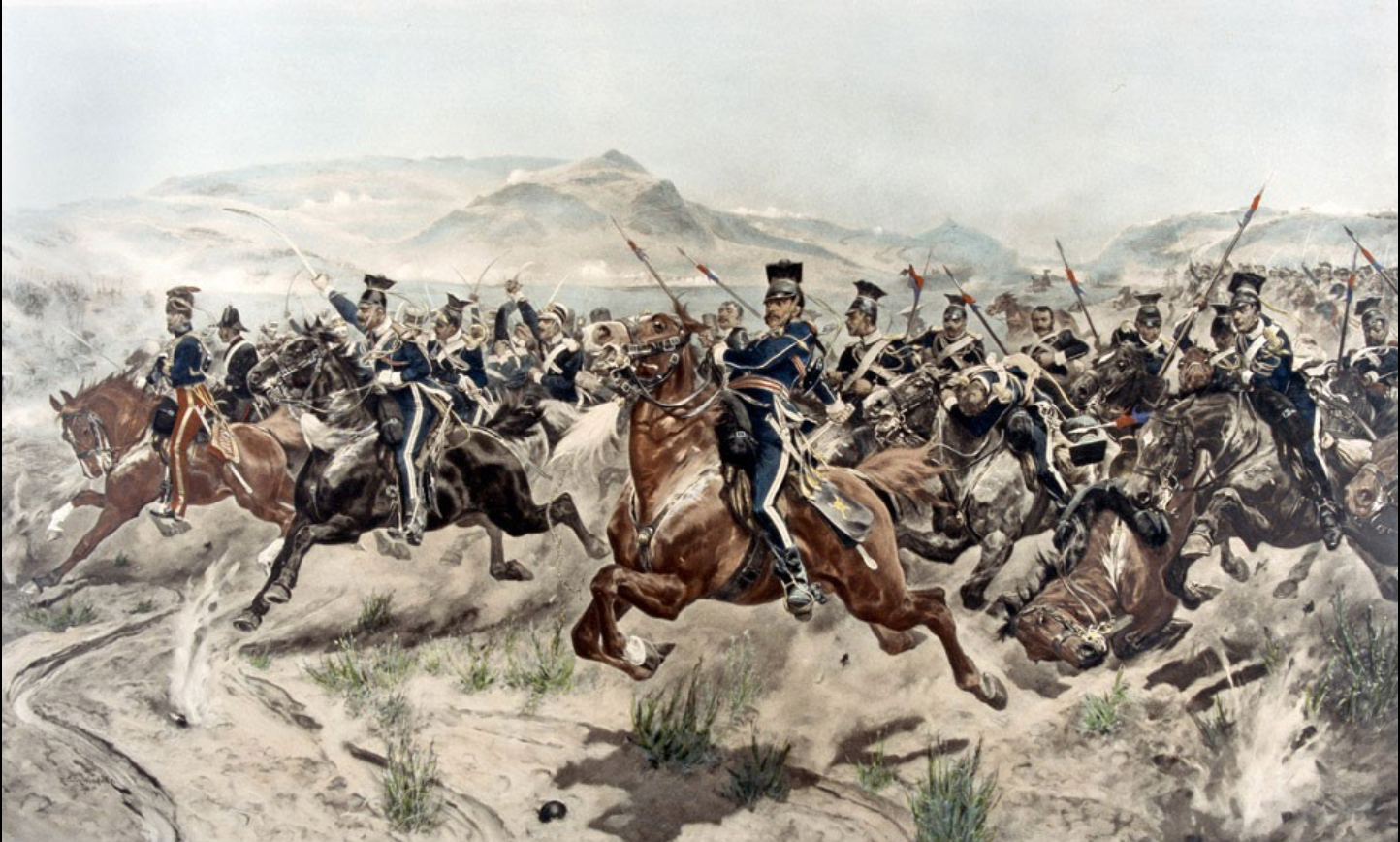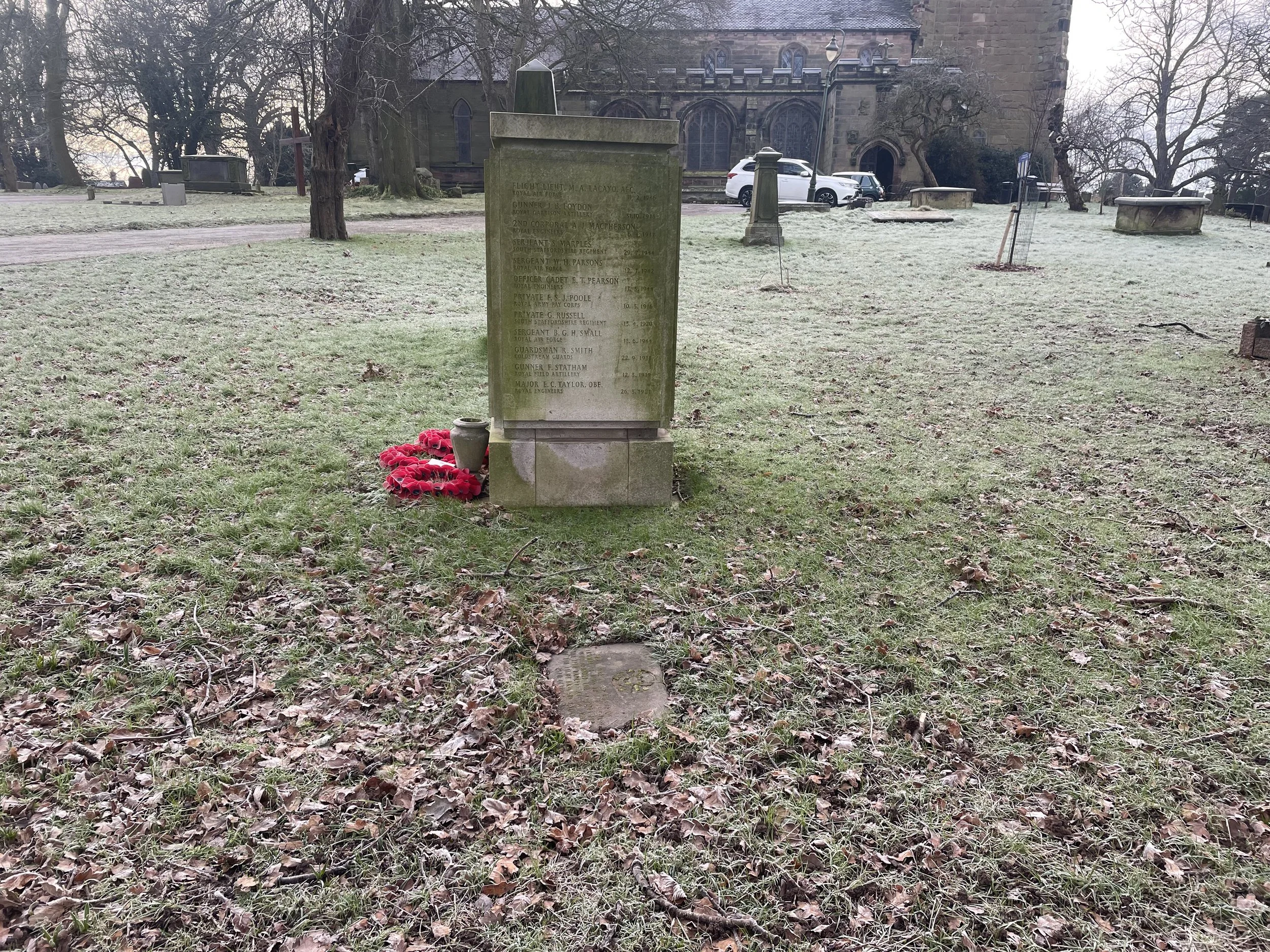John Browne and the Battle of Balaclava
Like many old churchyards, my local parish church, St Michael’s on Greenhill, Lichfield, has its share of graves and memorials with connections to history. Near our War Memorial, is a plaque commemorating a soldier from an earlier war. John Browne served in the Crimean War and was present, and took part in, the charge of the Light Brigade.
The below is adapted from an article I wrote for St Michael’s Parish Magazine.
Charge of the Light Brigade by Richard Caton Woodville Jr (image from Wikipedia)
‘Half a league, half a league, half a league onward,
All in the valley of death rode the six hundred …’
The opening of Alfred Lord Tennyson’s famous poem about the ‘Charge of the Light Brigade’ still has power to stir the soul. However, as any student of history will tell you, this event was a disastrous British military manoeuvre during the battle of Balaclava – the French general, Pierre Bosquet’s response was more pithy: c’est magnifique, mais ce n’est pas la guerre, c’est de la folie! [it’s magnificent, but it isn’t war, it’s madness!]
In my local parish churchyard, we have at least two people buried who were in the Crimea during the Crimean War. Elizabeth Logan was a nurse under Florence Nightingale, who I wrote about for the Open University History Society, and who the new Parish Rooms are being named after. But this article is about John Browne, who is also buried in St Michael’s churchyard and whose plaque is situated near the war memorial. John Browne was not only present at Balaclava, but also took part in the famous ‘charge.’ The Light Brigade was made up of several different cavalry units: 4thLight Dragoons, 8th Hussars, 11th Hassars, 13th Light Dragoons and the 17th Lancers. It was these six hundred and seventy plus men and horses that advanced at a trot towards the Russian guns, they only ‘charged’ for the last hundred yards or so before retreating and fighting their way back to the British and French lines. However, for the sake of simplicity, I will continue to talk about the ‘Charge’ of the Light Brigade.
John Browne had enlisted in May 1836, at the age of twenty-one and, by the time he was serving in the Crimea, was regimental trumpeter for the 17th Lancers. We are told he ‘sounded the charge for the ‘Death or Glory Boys’ on the fateful day, 25th October 1854, at the Battle of Balaclava.’ As we are also told, in a January 1989 article in The Mercury, the rigid military discipline of the time ‘even forbade [Lord] Cardigan to shout orders to his men when their bugler was mortally wounded’; we must assume John Browne (who survived the battle) was not the only bugler involved in the charge, and that each of the five regiments had at least one bugler. I imagine in the noise of the charge (and we are told the Russian guns did not stop firing), each trooper or lancer needed to be well within hearing distance of a bugler to know what was expected of him.
The Charge of the Light Brigade at Balaklava by William Simpson. This shows the charge into the valley from the Russian perspective (not one usually shown). (Image from Wikipedia)
This is not, of course, to deny John Browne’s bravery, nor his close brush with death – the heel of his boot was shot off by a musket ball, his coat-tail cut off by a Cossack lance and, as one report tells us, there was ‘a slight lance wound on the shoulder’. So, he didn’t quite escape unscathed. However, unlike the one hundred and thirteen killed, and two hundred and forty-seven badly wounded (to say nothing of the four hundred and seventy-five horses slaughtered), he was, in the worst-case scenario, ‘walking wounded.’
By the time he was discharged from the army in 1861, as ‘unfit and worn out’ at the grand old age of forty-five, he had served his country in four battles of the Crimea and (what was then called) the Indian Mutiny. Therefore, on his discharge, John Browne was the proud possessor of several medals: the Crimean Medal with four clasps (for the battles of Alma, Balaclava, Inkerman and Sevastopol) of 1854, the Turkey Crimean Medal of 1855, the Indian Mutiny Medal, the Long Service and Good Conduct Medal, and … the French Legion d’Honneur.
This last medal came through John Browne’s actions immediately after the charge of the Light Brigade. Russian cavalry blocked the British return up the valley. A Lieutenant Gordon had already received head wounds when a Russian Colonel rode up to ‘finish him off’. This was when Brown intervened and killed the Russian – only for the Lieutenant to tell Browne off, for not ‘leaving him to me!’ This, and the rescuing of three comrades in the battle (who may or may not have been French), led to the award of the Legion d’Honneur.
This photo shows John Browne’s plaque on the ground near the War Memorial and St Michael’s in the background
John Browne married and had four children. As an old soldier, among other things, he attended a banquet in Commemoration of the Charge in 1875, he modelled for Lady Butler’s picture ‘After the Charge’, he was appointed trumpeter to the Staffordshire Yeomanry, and was present at Queen Victoria’s Jubilee Celebrations in 1897. A full life in retirement. Unfortunately, he was only awarded a pension of one shilling and a halfpenny a day (just over 5p); and so was described at his death, aged 83, as having lived in ‘indigent circumstances’ by The Mercury.
His funeral was described as a grand military affair, and took place on March 31st 1898. The rumour, cited by his great-grandson Conor Browne, is that he was buried ‘in full uniform, with the silver bugle – and his dog.’


